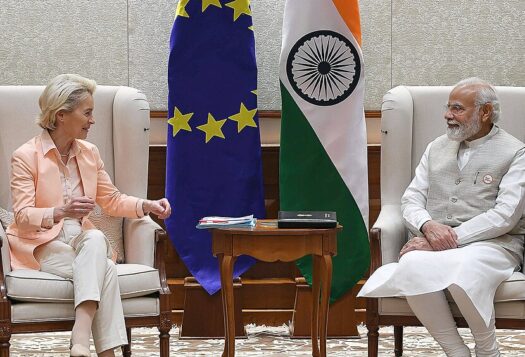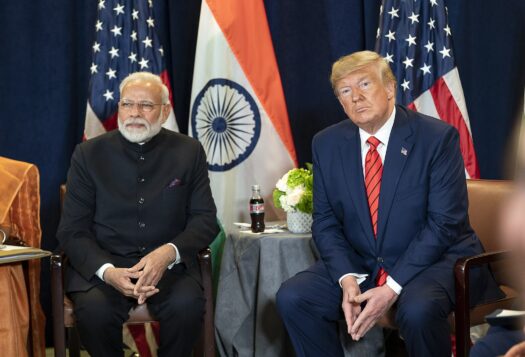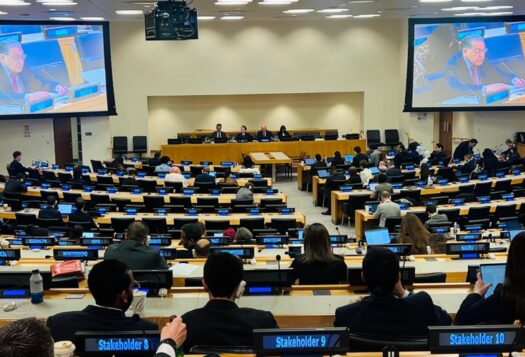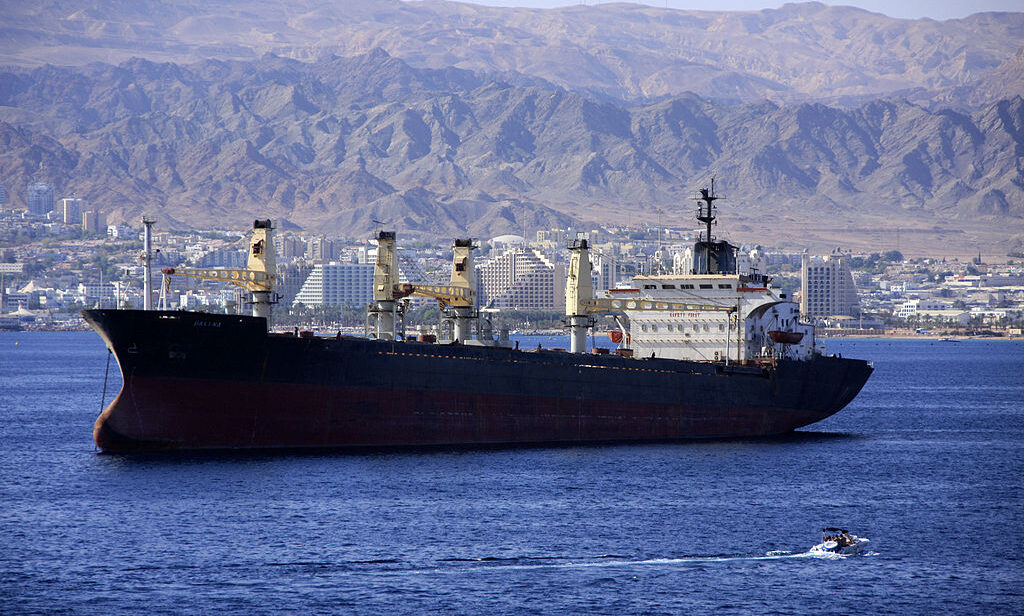
Editor’s Note: A version of this piece originally appeared on The Diplomat and has been republished with permission from the editors.
The global repercussions of the recent Houthi attacks on international maritime vessels in the Red Sea are becoming apparent. As shippers globally are rerouting away from the Red Sea route – which is the shortest and most efficient trade route for ships moving from Asia to Europe – increased freight costs are likely to impact energy prices and inflation. In a globalized world, no country is immune from such geopolitical incidents, no matter how distant they might be. India in particular has been directly impacted by the attacks, forcing it to increase its maritime presence in the region – while refraining from joining the U.S.-led coalition.
India in particular has been directly impacted by the attacks, forcing it to increase its maritime presence in the region – while refraining from joining the U.S.-led coalition.
On November 19, Houthi rebels hijacked an Israeli cargo ship in the Red Sea, to “express solidarity with Palestine” over the ongoing war between Israel and Hamas in the Gaza Strip. Since then, more than 28 ships have been attacked. Following continued, frequent attacks by the Houthis, exactly a month later, the United States announced a “defensive coalition” of nations – Operation Prosperity Guardian – to aid the safe movement of ships in the Red Sea. Around 20 countries reportedly joined the Operation, some of which are not “willing to publicly declare themselves as partners.”
A more aggressive move followed when the United States and United Kingdom, supported by Australia, Bahrain, Canada and the Netherlands, first launched military strikes against Houthi targets on January 12. Subsequently, the U.S. has continued with retaliatory strikes, relisted the Houthis as “specially designated global terrorist group” and is now calling for a “world response” to deal with the crisis.
Initially, the Houthis were attacking ships with direct links to Israel; however, the more recent attacks have attacked ships of countries which they saw as “providing support” to Israel. India, which has so far officially maintained a neutral position on the Israel-Palestine conflict, was directly drawn into the crisis when a commercial ship heading toward Pipavav, in India’s Gujarat state, was hijacked, allegedly by the Houthis. In another instance, a ship docked at the Mangalore Port, MV Chem Pluto, was attacked by a projectile launched by Houthi rebels. Just a day later, a Gabon-flagged vessel with Indian crew onboard was struck by a one-way attack drone only 200 nautical miles off the Indian coast.
In response, the Indian Navy has deployed sophisticated maritime assets including surveillance drones, patrol aircraft, off-shore patrol, guided missile destroyer ships, and frigates. In one of the largest exercises in the Arabian Sea in recent years, the Indian Navy carried out a complex exercise involving twin-carrier operations and coordinated the deployment of over 35 aircrafts in the Arabian Sea on January 10. The Indian Navy also responded to a distress call by a Marshall Island-flagged vessel and provided timely assistance to ensure the ship and its crew were safe and free.
At the international level, India refrained from joining the multinational Operation Prosperity Guardian, despite an invitation from the United States. This led some to point out that India needs to do more diplomatically, including working with the U.S. and other countries, to provide an effective response, especially in light of its aspirations to become a security provider in the Indian Ocean. However, India’s fairly passive response reflects a careful assessment of the evolving situation, allowing New Delhi the time and space to respond in a manner that allows it to maximize its own interests.
At the outset, it is important to understand the domestic factors at play behind the Houthi attacks. Despite their proclaimed objective of expressing support for Palestine, for the Houthis, the war in Gaza is nothing more than an opportune moment to raise their profile at home. Their domestic legitimacy is being questioned in Houthi-controlled areas in Yemen after years of failing to pay public service employees. In a rare display of disaffection, since August 2023, teachers in Houthi-controlled areas have been staging several protests to demand fair compensation.
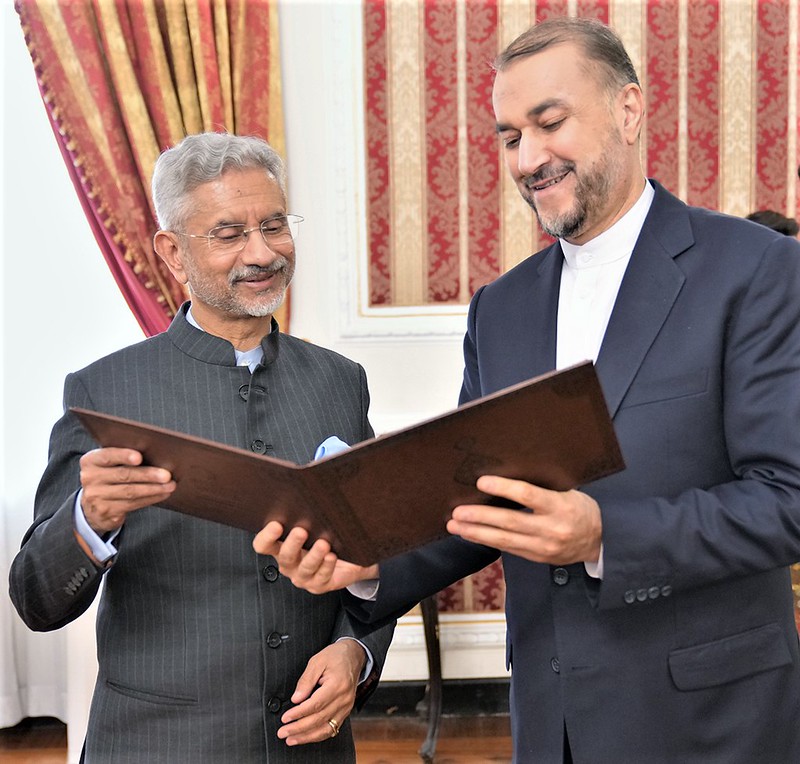
This has even caused disaffection among the ranks, as Houthi leaders have taken to hunger strikes to demand payment of salaries to employees. The Houthis had taken to responding to criticisms with arrests or “investigations,” which further aggravated discontent among citizens. The level of dissatisfaction was so high that ordinary people even began to question how long the Houthis would remain in power. Therefore, drawing on the ideas of diversionary theory of war, it is not a stretch to assume that the attacks come as an attempt to divert attention away from the domestic political situation.
Another important related dynamic is the special relationship between Iran and the Houthis. While the Houthis cannot be considered a “proxy” for Iran – the way Hezbollah is in Lebanon – they are more integrated than ever before in the Iranian armed network. Experts assess that Tehran is likely providing both material support and training to carry out the complex drone and anti-ship missile attacks in the Red Sea. Amid the Houthi attacks, Iran sent a warship to the Red Sea, as a show of force. While Tehran has repeatedly denied any involvement in the Red Sea attacks, it was among the first nations to strongly condemn the U.S.-U.K. strikes in Yemen, describing them as “arbitrary” and in violation of international law.
While Tehran will refrain from any active involvement in the crisis, two things are clear. Iran will continue to reject, and possibly hamper, any possible Western attempts at resolving the Red Sea, and Iran is arguably the only country with covert, if not overt, backchannel links with the Houthi militia. These two factors play an important role in understanding the efficacy of the retaliatory, largely Western, response to the attacks. With their attacks on the Houthis, Washington and London tried to send the message that they are militarily prepared to take any action to protect people and the free flow of commerce. But the reality is that the Houthis still have the ability to carry out attacks. Indeed, the Houthis have continued with retaliatory attacks, including a missile strike which hit a U.S. owned ship. In what can only be described as a double whammy, the Houthis seem to have achieved their objective of distracting citizens from the pressing domestic issues, who have now taken to the streets to protest against the U.S. and U.K.
As the United States does not want to get embroiled in a larger regional conflict in the Middle East, President Joe Biden reportedly sent a “private message” to Iran about the Houthis. While the contents of the message are obviously classified, it sends a strong message about the role Tehran can play in deescalating, if not ending, the crisis. This is where the pragmatic prudence of India’s seemingly muted response to the crisis lies.
In light of India’s seemingly pro-Israel posture as the crisis in Gaza intensifies, some see New Delhi as getting enmeshed into the “U.S.-led security ecosystem” in a move away from its traditionally nonaligned position.
In a recent visit by Indian External Affairs Minister S. Jaishankar to Tehran, he raised the issue of the attacks with his Iranian counterpart, highlighting how the “fraught situation” is “not to the benefit of any party.” According to a press release from the U.S. Department of State, before the visit, Jaishankar had a call with U.S. Secretary of State Antony Blinken, where both sides expressed “shared concerns over reckless Houthi attacks in the southern Red Sea and Gulf of Aden.” Such diplomacy is characteristic of New Delhi’s tightrope balance between Iran and the United States.
In light of India’s seemingly pro-Israel posture as the crisis in Gaza intensifies, some see New Delhi as getting enmeshed into the “U.S.-led security ecosystem” in a move away from its traditionally nonaligned position. However, the Red Sea crisis comes as a stark reminder that pragmatic flexibility is, and likely will remain, a feature of India’s policy approach to the Middle East.
Also Read: India in 2023: Year of India-U.S. Bilateral Exchanges & Burgeoning Defense Ties
***
Image 1: Ship in the Red Sea via Wikimedia Commons
Image 2: External Minister Jaishankar with External Minister Abdollahian via Flickr
